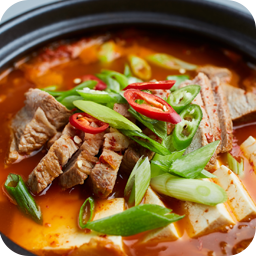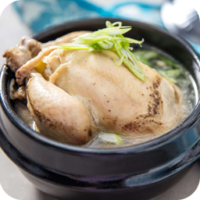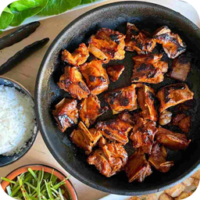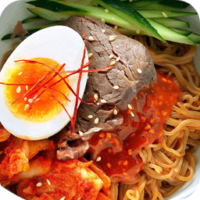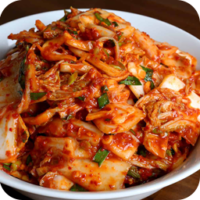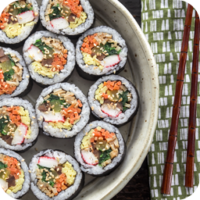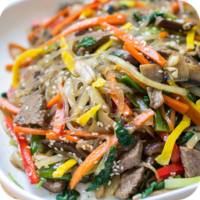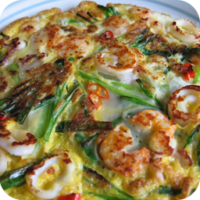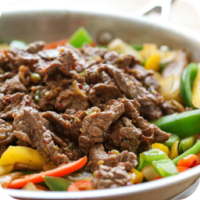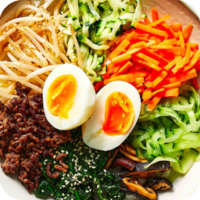Kimchi Jjigae (김치찌개) is a traditional South Korean stew made primarily with fermented kimchi and often cooked with pork, tofu, and vegetables. It is one of Korea’s most beloved comfort foods, known for its rich, spicy, and tangy flavors. This dish is frequently served as a hearty meal or a side dish alongside rice.
Key Ingredients:
- Kimchi:
- The main ingredient, typically aged fermented napa cabbage kimchi, provides a bold, tangy, and slightly sour flavor.
- Pork (or Tuna):
- Pork belly or pork shoulder is commonly used for added richness.
- Canned tuna is sometimes substituted for a lighter variation.
- Tofu:
- Soft or firm tofu cubes are added for texture and protein.
- Vegetables:
- Includes onions, green onions, zucchini, and mushrooms for flavor and substance.
- Broth:
- Made from anchovy stock, dashi, or pork broth, giving it a deep umami flavor.
- Seasonings:
- Gochugaru (Korean chili flakes) and gochujang (chili paste) add heat and depth.
- Garlic, soy sauce, and sesame oil enhance the flavor profile.
Flavor Profile:
- Spicy, savory, tangy, and umami-rich, with layers of flavor coming from the fermented kimchi and pork fat.
How It’s Made:
- The kimchi is stir-fried with pork to release flavors.
- Broth is added, and the stew is simmered until the flavors meld.
- Tofu and vegetables are added, followed by seasonings like chili paste and soy sauce.
- Served hot and bubbling directly in the pot.
How It’s Served:
- Typically served with steamed rice and side dishes (banchan) such as kimchi, pickled radish, and spinach salad.
- Often cooked in a hot stone pot to retain heat throughout the meal.
Variations:
- Tuna Kimchi Jjigae: Made with canned tuna instead of pork for a lighter flavor.
- Sundubu Kimchi Jjigae: Features soft tofu (sundubu) for a silkier texture.
- Seafood Kimchi Jjigae: Includes shrimp or clams for a briny flavor.
Cultural Significance:
- A staple dish in Korean households, often made using leftover kimchi that has aged and developed deeper flavors.
- Reflects Korean culinary traditions of fermentation and resourcefulness.

